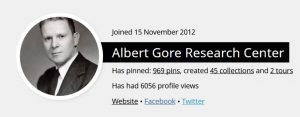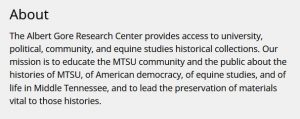What a week! I have several new developments to report as part of my project progress for this week. I will break it down into three parts as there are now multiple strands related to progress on Nashville Sites.
- As I mentioned in an earlier progress report, I made the decision to separate the class project for HIST694 from the actual project that I hope will go live sometime between August and November 2017. While I started this process wanting to build something that could be developed after the semester, I realized that it would actually be easier to build my digital project for the class and then work to migrate the content into a more desirable (mobile-friendly) customized theme and design layout. In other words, for this class, the content remains most important and so I should spend my time on that while simultaneously working to make the actual final project a reality. This weekend, I’ve spent a great deal of time on the course project and have finally made some headway. I’ve set up the framework for a thematic exhibit with nested pages. I have also decided to use Neatline rather than Curatescape to create my walking tours. After running into several technical glitches with Curatescape, I found that Neatline serves my purposes just as well, although I wish I could find a way to list the walking tours in one of the text boxes on the homepage rather than just a tab. I’ve not yet seen any way to do this, but perhaps there is a workaround. I still have content to add, but I now have my first (of three) walking tours set up and mapped.
- In terms of Nashville Sites beyond this course, I also have progress to report. After meeting with Nick Lorenson of Code Nashville, nearly three weeks ago, we had a great meeting last week. After looking at several existing sites (based on place) that we would like to model in some way (Philly, Cleveland, Mall Histories, WWI: Love and Sorrow) as well as looking at the capabilities of themes, plug-ins, etc., Nick proposed three options. We could continue with Omeka and try to update the existing Mall Theme. We could also continue with Omeka but build a new theme. Finally we could use WordPress instead of Omeka because it would be easier to find technical support and local contacts who could help. He concluded that while he is unfamiliar with Omeka that from the back end it is something that he would be comfortable working with and that it seems to be better suited to accomplish the project’s goals (user-friendly, engaging, educational, scholarly sound). That led to a second meeting, which I had this morning. The meeting was with Fog Haus, a computer/web engineering firm. It is a small firm and includes Nick and two partners. We had a great meeting. They are enthusiastic, visionary, and can do the technical “stuff” that I cannot. We spent a great deal of time going through sites, looking at options, and coming up with a plan. This course sure has come in handy as we discussed responsive design, audience, personas, and storyboarding. I shared with them several of the assignments that I have completed for this course! (And they are very impressed might I add, so thank you Dr. Leon.)
- So where does all this go from here? Following my meeting with Fog Haus, they are working on a bid to design and build the project. I just got off the phone with Tim Walker (MHC director) and continue to have his full support. I am slated to present my project to the MHC Foundation in a week at the quarterly board meeting. So I am anxious to get the bid from Fog Haus and equally anxious to see if the MHC Foundation will/can fund it. As for the course project, now that I have it off the ground I need to continue to build the content as related exhibits, and walking tours. I hope to have more time to do so in the coming days.




